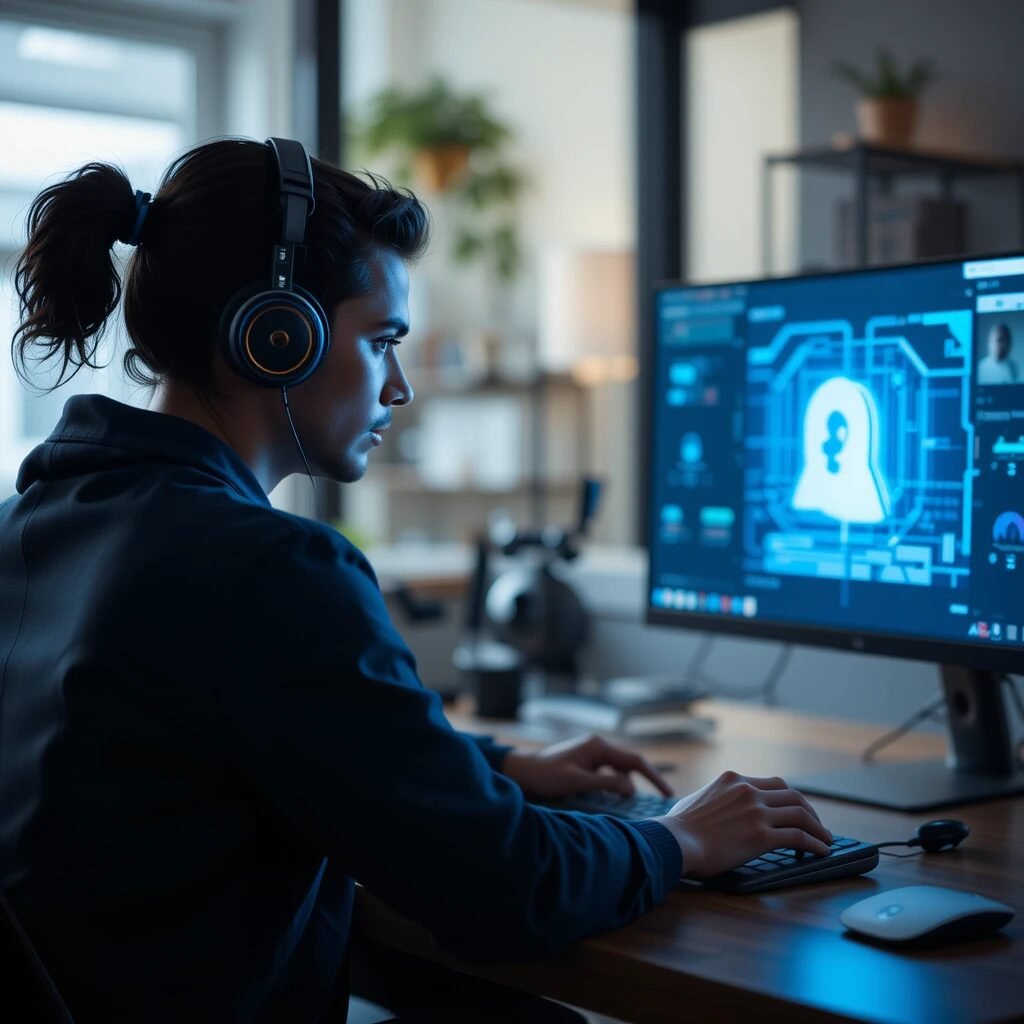Understanding the Importance of Video Conferencing in Remote Work
In today’s rapidly evolving business landscape, video conferencing has emerged as a quintessential tool for remote work. As organizations strive to maintain productivity while transitioning to a virtual environment, video calls enable seamless communication among team members, ensuring that collaboration remains at the forefront of daily operations. This shift underscores the significance of effective communication tools that can foster connectedness and engagement, regardless of physical location.
Video conferencing platforms facilitate interactions that text-based communication methods often fail to achieve. By allowing employees to see and hear their colleagues, video calls help nurture interpersonal relationships, instill trust, and promote a sense of camaraderie among remote workers. The richness of visual and auditory cues helps replicate the dynamics of in-person meetings, making it easier for teams to share ideas, brainstorm solutions, and provide feedback in real time. Consequently, businesses that adopt video conferencing as part of their communication strategy can enhance overall collaboration, leading to improved outcomes and innovation.
Moreover, the onset of remote work has led to a heightened reliance on video conferencing solutions, as many organizations have had to re-evaluate and adapt their communication strategies to align with new workplace norms. With traditional face-to-face encroachments becoming less feasible, video calls have emerged not only as a temporary solution but as a fundamental aspect of modern business operations. This evolution presents businesses with the opportunity to invest in appropriate tools that not only meet current needs but also prepare them for the future of work.
In essence, video conferencing plays a crucial role in maintaining operational effectiveness in remote environments. By embracing this technology, organizations can create a collaborative culture that transcends geographical boundaries and fosters a productive workforce, thus highlighting the importance of video calls in contemporary business practices.
Identifying the Security Risks Associated with Video Conferencing
As remote work continues to gain prominence, video conferencing has emerged as an indispensable tool for many organizations. However, the increasing reliance on these platforms also brings various security vulnerabilities that must be addressed. One key risk is the threat of cyberattacks. Video conferencing tools can be susceptible to unauthorized access, where malicious actors exploit weaknesses to infiltrate meetings. Such breaches can lead to sensitive information being exposed, giving attackers the opportunity to engage in unauthorized eavesdropping or data theft.
Data breaches represent another critical risk associated with video conferencing. Many platforms store and transmit data over internet connections, which can be intercepted if adequate encryption is not employed. Ensuring that the chosen video conferencing solution uses robust encryption methods is crucial to safeguarding sensitive discussions and sharing of proprietary information. Moreover, poorly configured settings can inadvertently allow for the sharing of unprotected data, heightening the chances of a data compromise.
Compliance violations are equally concerning in the context of video conferencing. Organizations must adhere to industry regulations regarding data protection and privacy, such as the General Data Protection Regulation (GDPR) and the Health Insurance Portability and Accountability Act (HIPAA). The failure to utilize secure video conferencing tools may result in non-compliance, leading to significant fines and reputational damage. It is imperative for organizations to conduct a thorough assessment of their video conferencing tools to ensure they align with compliance requirements.
Lastly, it is essential to recognize that not all video conferencing platforms offer the same level of security. A comprehensive evaluation of each tool’s security features is necessary to identify gaps in protection that could expose sensitive information. Organizations must prioritize security to maintain their integrity and the confidential nature of their communications in the remote work environment.
Selecting Secure Video Conferencing Solutions: Key Criteria
As remote work becomes increasingly prevalent, organizations must prioritize the selection of secure video conferencing solutions to protect their sensitive data and ensure the privacy of their communications. The first important criterion to consider is the implementation of reliable encryption methods. Look for solutions that provide end-to-end encryption, ensuring that the audio and video streams are encrypted before they leave the user’s device and can only be decrypted by the intended recipient. This level of security helps safeguard against potential eavesdropping and unauthorized access.
Another critical aspect is robust access controls. Organizations should seek video conferencing platforms that allow for customizable participant permissions, enabling hosts to control who can join meetings and whether they can share screens or chat. Features such as password protection, waiting rooms, and the ability to remove participants enhance the overall security of video calls. Ensuring that only authorized individuals can gain access to sensitive discussions is vital to mitigating security risks.
Administrative features also play a significant role in maintaining control over video conferences. The ideal solution should enable hosts to manage participants effectively, including the ability to mute participants, lock meetings, and review who attended the call. These features not only ensure better management during meetings but also help to prevent disruptions and unauthorized sharing of information.
Additionally, organizations should consider the integration security of video conferencing solutions with third-party applications. Platforms that provide secure APIs and maintain high standards for integration help prevent vulnerabilities that could arise from connecting to external tools. Finally, compliance with relevant industry regulations, such as GDPR or HIPAA, is essential for any organization to verify that the video conferencing solution adheres to legal privacy standards, thereby enhancing trust in the platform’s security posture.
Implementing Best Practices for Secure Video Conferencing
As remote work becomes increasingly prevalent, ensuring secure video conferencing is vital for maintaining the integrity of organizational communications. One of the foundational strategies to bolster security is comprehensive team training. Employees should be educated on recognizing and responding to potential threats, particularly phishing attacks, which have become more sophisticated in recent years. Training sessions can provide valuable insights into identifying suspicious links and emails, thus empowering team members to act cautiously.
Utilizing secured networks plays a critical role in safeguarding sensitive discussions conducted over video calls. Organizations should encourage employees to avoid public Wi-Fi networks which may expose data to cybercriminals. A reliable Virtual Private Network (VPN) can be an effective solution, encrypting the communication channel and protecting sensitive information during discussions. By promoting the use of VPNs, organizations can ensure their video conferencing tools are accessed in a secure environment.
Additionally, when it comes to recording meetings, organizations must implement clear guidelines to control how and when recordings are made. Recordings should only be conducted with the consent of all participants to maintain trust and comply with privacy regulations. Furthermore, securely storing recordings is essential. Utilizing encrypted storage solutions minimizes the risk of unauthorized access to sensitive information captured during video calls.
Moreover, organizations should consider establishing protocols to regularly update video conferencing software. Staying current with the latest security updates protects against vulnerabilities that cybercriminals can exploit. Encouraging employees to enable automatic updates can help safeguard communication technologies employed for remote work.
In summary, adopting these best practices for secure video conferencing—such as team training, secure network usage, careful handling of recordings, and timely software updates—can significantly mitigate risks and enhance the overall security posture of organizations navigating the landscape of remote work.

 from Africa, Asia and United Nations here for your comfort in different languages, but you can click on our translator in different languages on our Website.
from Africa, Asia and United Nations here for your comfort in different languages, but you can click on our translator in different languages on our Website.
